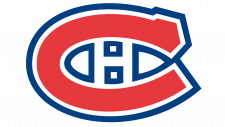Vancouver Canucks Logo
The Vancouver Canucks, a prominent NHL team, is presently owned by Francesco Aquilini, via the Aquilini Investment Group. The Canucks hail from Vancouver, British Columbia and host their home games at Rogers Arena. The team, notable for its dynamic play and fervent fan base, has a significant presence in the competitive hockey scene and is a key contributor to the sports culture in Vancouver, consistently striving for excellence and aiming to clinch prominent titles in the league. The ownership remains dedicated to maintaining high standards and enhancing the team’s performance.
Meaning and history
The Vancouver Canucks, an esteemed NHL franchise, have a rich history stemming from their inception in 1970. Originating as an expansion team, the Canucks have undergone numerous transformations, both in terms of management and team composition. Initially, the Canucks struggled to gain traction, facing challenges in cultivating a winning team dynamic. However, steadfast commitment and strategic alterations gradually enhanced their competitiveness.
In the realm of ownership, the Canucks have witnessed transitions, the most notable being the acquisition by the Aquilini Investment Group, led by Francesco Aquilini, ensuring stable and visionary leadership. The team’s journey has been marked by fluctuations, reaching the pinnacle of success with multiple appearances in the Stanley Cup Finals, yet facing periods of reconstruction and revitalization.
The Canucks have embraced a diverse array of logos and jerseys throughout their existence, reflecting the evolving identity and heritage of the team. Notable players like Pavel Bure, Trevor Linden, and the Sedin twins have adorned the Canucks’ roster, leaving indelible marks and elevating the team’s stature in the NHL.
Through trials and triumphs, the Vancouver Canucks have cemented their legacy, continually striving to attain championship glory and fostering a fervent and dedicated fan base, contributing substantially to Vancouver’s vibrant sports culture. The continuous pursuit of excellence and resilience remains emblematic of the Canucks’ ethos, underscoring their enduring presence in the hockey world.
1952 – 1964
The inaugural emblem for the Vancouver Canucks illustrated a hockey player in stride, utilizing a color scheme of blue, white, and red. This emblem earned the moniker “Johnny Canuck,” a name that continues to echo amongst the club’s aficionados. It held its place on the team’s uniforms persistently, even lingering beyond the period of the official emblem transition. This enduring image is imprinted in the memories of the fanbase, symbolizing a significant chapter in the club’s history and retaining a sense of nostalgia. The remnants of Johnny Canuck are a testament to the long-lasting impact and the enduring affection the fans harbor for the early representations of their beloved team.
1964 – 1970
In 1974, Johnny Canuck underwent a redesign, being recast in shades of blue and white. Instead of being depicted in a skating pose with a hockey stick, he was now illustrated in a kneeling position, seemingly paying homage to the sport of hockey. This depiction conveyed a sense of reverence and respect towards the game, highlighting the passion and dedication inherent to the sport. This rendition of the emblem remained synonymous with the club for a subsequent six years, maintaining its presence until the team’s incorporation into the NHL. It symbolized a transitional period for the team, marking its evolving identity and commitment to excellence in the league. The embodiment of respect and honor in the logo resonated with the fans, reflecting the values and traditions of the club during its formative years in the national arena.
1970 – 1978
The inaugural insignia for this NHL squad presented itself as a blue horizontal rectangle, exhibiting soft, rounded edges, bordered by a subdued shade of green. A white linear design, arching in the semblance of a hockey stick, extends towards the central exterior. This design element bifurcates the geometric form, rendering it a visual representation of “C,” symbolizing the initial letter of the word Canucks. This emblem, colloquially termed Stink-in-Rink, is the creative brainchild of Joe Borovich, a graphic design connoisseur hailing from North Vancouver. This conceptual design served as a foundational visual representation, blending elemental simplicity with symbolic representation, encapsulating the team’s identity during its formative phase in the league. The distinctive style and minimalist aesthetic of this logo are reflective of the era’s design principles, while the embedded symbolism serves as a timeless reminder of the team’s origins and enduring legacy in the world of professional hockey.
1978 – 1992
In 1978, the hockey organization introduced a new symbol, informally deemed the “waffle iron,” attributed to its circular configuration and abundant parallel diagonal striping. The core component is segmented into dual hemispheres, featuring the inscription CANUCKS, emulating the contour of a skate blade. Extended lines of varying lengths fabricate a perception of swift motion. The color scheme underwent a significant transformation: the seamless blend of blue and white yielded to a striking amalgamation of vibrant orange, gold, and black.
This novel insignia marked a pivotal deviation, reflecting both dynamic aesthetics and bold visual elements, capturing the essence of speed inherent to the sport. The emblem’s visual elements, resonant with energy and momentum, were meticulously arranged to portray the relentless and fast-paced nature of hockey. The dramatic departure from the tranquil hues to the vibrant and bold palette signaled a refreshed identity, representing a period of transformation and renewed vigor for the club. The emblem, with its distinct stylization and innovative design elements, served to embody the evolving spirit and progressive trajectory of the team in the competitive hockey landscape.
1992 – 1997
The “waffle iron” emblem emerged as a representative icon of Vancouver Canucks’ triumphs during the early 1990s, a time marked by the team clinching victories in several pivotal contests. Interestingly, this period of accomplishment was heralded by a shift in color scheme: in 1992, the gold hue transitioned to yellow, and the orange adopted a more red-oriented tint.
This emblem, symbolizing notable victories, played a significant role in defining the team’s identity during a time marked by competitive success and high-stake achievements. The subtle alteration in colors perhaps symbolized a period of revitalization and renewed energy, reflecting the evolving dynamics and the resilient spirit of the team. This period, characterized by both aesthetic modifications and on-field victories, underscored the connection between evolving visual identities and the overall morale and performance of the team. The enhancements in the emblem, coupled with strategic color modifications, served to encapsulate the evolving essence and the triumphant journey of the Canucks during this significant chapter in their history.
1997 – 2007
In 1997, a newly adopted logo came into existence, incorporating the club’s primary mascot, the killer whale. This emblematic whale doesn’t just leap from the waters; it’s portrayed amidst flying fragments instead of mere splashes, forming a unique visual dynamic. Interestingly, the whole graphic design shapes itself into the letter “C,” symbolizing the embodiment of the team’s name. The emblem holds profound connections to the western coast of British Columbia and subtly nods to Orca Bay Sports & Entertainment, the entity which acquired the franchise in 1995.
This redesigned logo marked a significant shift in visual identity, with a color scheme transforming extensively to integrate shades of dark blue, light blue, gray, white, and burgundy, each contributing to a refreshed and diversified aesthetic. This change not only depicted the team’s connection to its locale and ownership but also symbolized a deeper evolution in branding, reflecting a broader spectrum of colors and meanings. The integration of varying elements within the emblem illustrated a harmonious blend of tradition and modernity, showcasing the progressive trajectory of the club in the world of hockey. The intricacies of the design and the profoundness of its representation marked a new era in the visual journey of the Canucks, embedding deeper significances and broader color palettes into the team’s evolving identity.
2007 – 2019
In 2007, another metamorphosis befell the logo’s palette. The burgundy stripes that once adorned the killer whale’s contour were nowhere to be seen, and the waters displayed a more subdued blue tint. However, alterations were not just confined to color modifications: designers innovatively embedded the inscription “VANCOUVER” into the imagery. This representation of the club’s home city is gracefully positioned at the zenith, forming an arch.
This evolutionary step in design was not merely an aesthetic choice; it was a nuanced incorporation representing geographical pride and local identity. The harmonious blend of revised colors and the nuanced addition of the city’s name symbolized a seamless integration of locality with the emblem’s core elements. It was a clear nod to the team’s roots, adding a layer of meaning and connection to the locale, whilst maintaining the essence and the integrity of the original design. The muted shades of blue and the omission of burgundy added subtlety, and the arched inscription lent a more comprehensive identity to the emblem, creating a sense of belonging and home, enveloping the spirit of Vancouver within the team’s symbol.
2019 – Today
The textual insignia saw its tenure only up to the 2019 campaign. Subsequently, the creative minds opted to omit the textual component, spotlighting solely on the imposing presence of the killer whale. Their intention was clear – to hone in on the emblematic essence of the team symbol. By streamlining the design and eliminating the wordings, they believed in emphasizing the emblem’s core, allowing fans and spectators alike to resonate more profoundly with the majestic marine creature. This was a conscious attempt to embrace simplicity and drive the visual narrative towards a singular, potent symbol, ensuring the killer whale stood undistracted in its full glory, representing the team’s spirit and ethos. The change signified a shift towards minimalism while retaining a strong connection to the club’s legacy and identity.



















